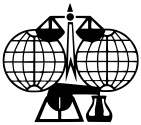International Union of Pure and Applied Chemistry
| International Union of Pure and Applied Chemistry (IUPAC) |
|
|---|---|

|
|
| founding | 1919 |
| Seat |
Zurich , Canton of Zurich , Switzerland Secretariat: Research Triangle Park , North Carolina , United States |
| main emphasis | Promote communication between chemists around the world |
| Chair |
Qi-Feng Zhou (President)
Richard M. Hartshorn (General Secretary) |
| Members | 1623 organizations in 75 countries |
| Website | www.iupac.org |
The International Union of Pure and Applied Chemistry (IUPAC; German International Union for Pure and Applied Chemistry ) was founded in 1919 by chemists from industry and universities. The aim was to enable and promote global communication among chemists. The IUPAC has long been recognized as the determining institution when it comes to recommendations on nomenclature , symbols , terminology, standardized measurement methods, values for molar masses of chemical elements in natural isotope mixture compositions and many other topics in the field of chemistryacts. The association publishes the journal Pure and Applied Chemistry .
Some members volunteer for IUPAC in projects, which are divided into the following eight departments:
- Analytical chemistry
- Inorganic chemistry
- Chemistry and health
- Chemistry and the environment
- Chemical nomenclature and structure representation
- Macromolecular Chemistry
- Organic and Biomolecular Chemistry
- Physical and biophysical chemistry
Emergence
Long before it was founded, there was a desire among chemists to promote international cooperation. There was already a forerunner organization, the International Association of Chemical Societies (IACS) , which met in Paris in 1911 and was supposed to deal with issues of nomenclature and standardization in chemistry, among other things. Attempts to standardize chemical nomenclature began as early as 1860, when Friedrich August Kekulé von Stradonitz organized the first international meetings, which finally led to the so-called Geneva nomenclature for organic chemical compounds in 1892 .
management
President is Qi-Feng Zhou. He replaced Natalia Tarasova.
See also
Web links
- Official website (English)
- IUPAC Compendium of Chemical Terminology - the Gold Book (English)
- IUPAC Nomenclature of Inorganic Chemistry (Red Book) (English, PDF, 4.1 MB)
Individual evidence
- ^ A b Announcement from the Science Information Service dated August 10, 2011; Retrieved December 7, 2011.
- ↑ Webpage of the Royal Australian Chemistry Institute ; Retrieved December 7, 2011.
- ↑ a b c IUPAC: Our Leadership , accessed August 6, 2017.